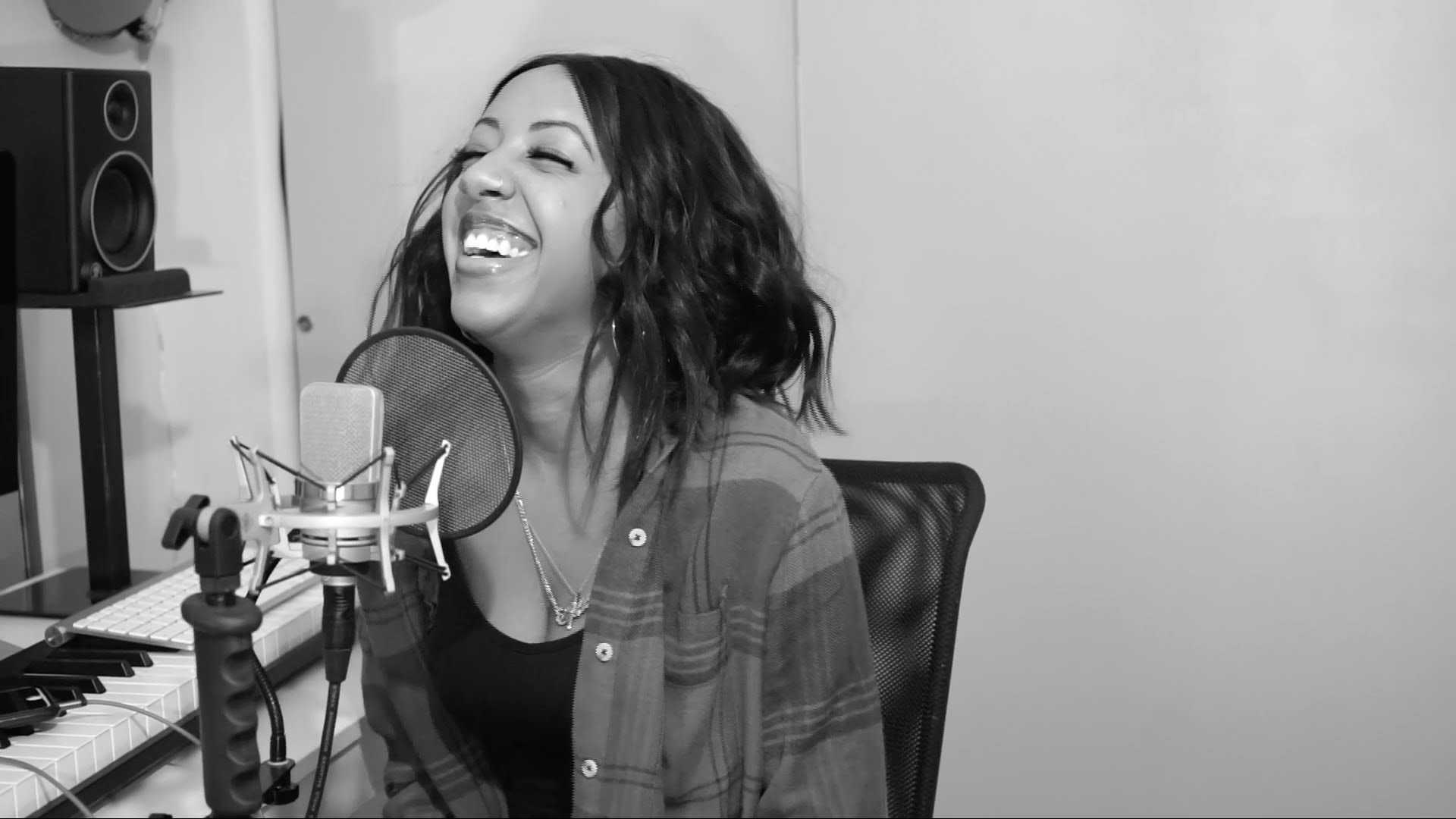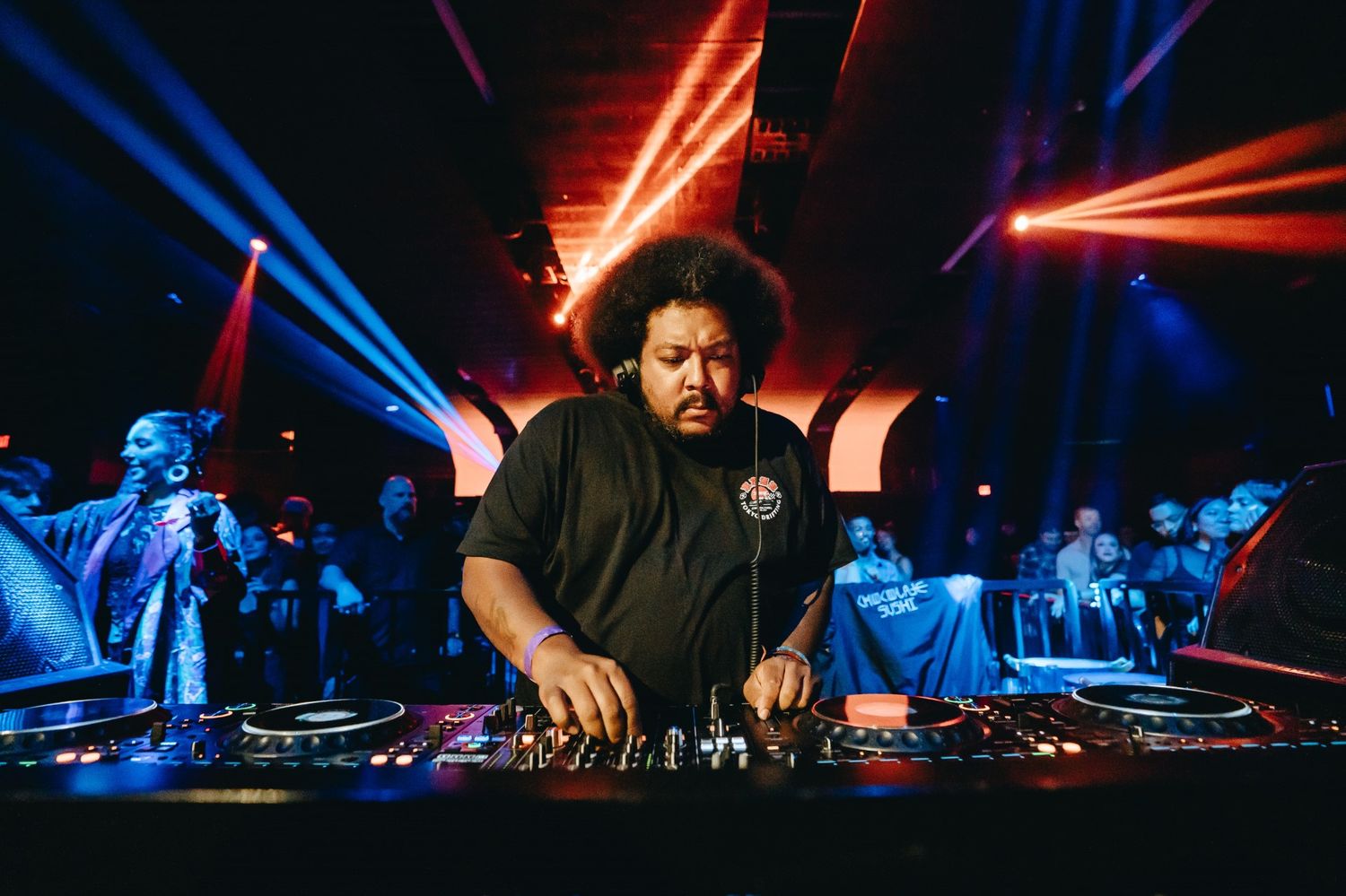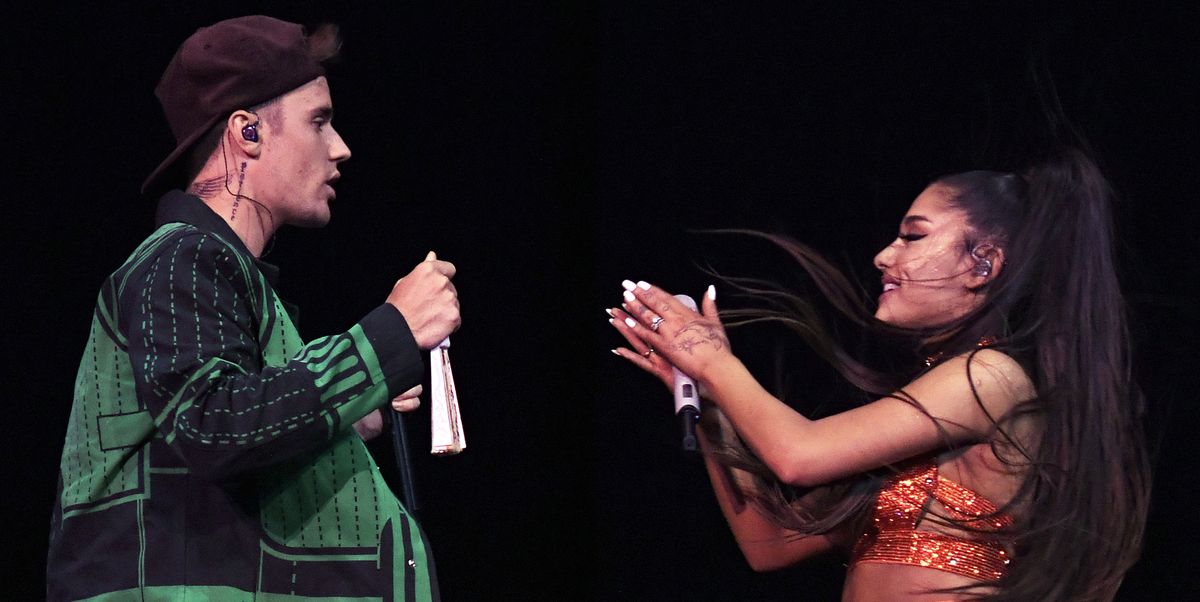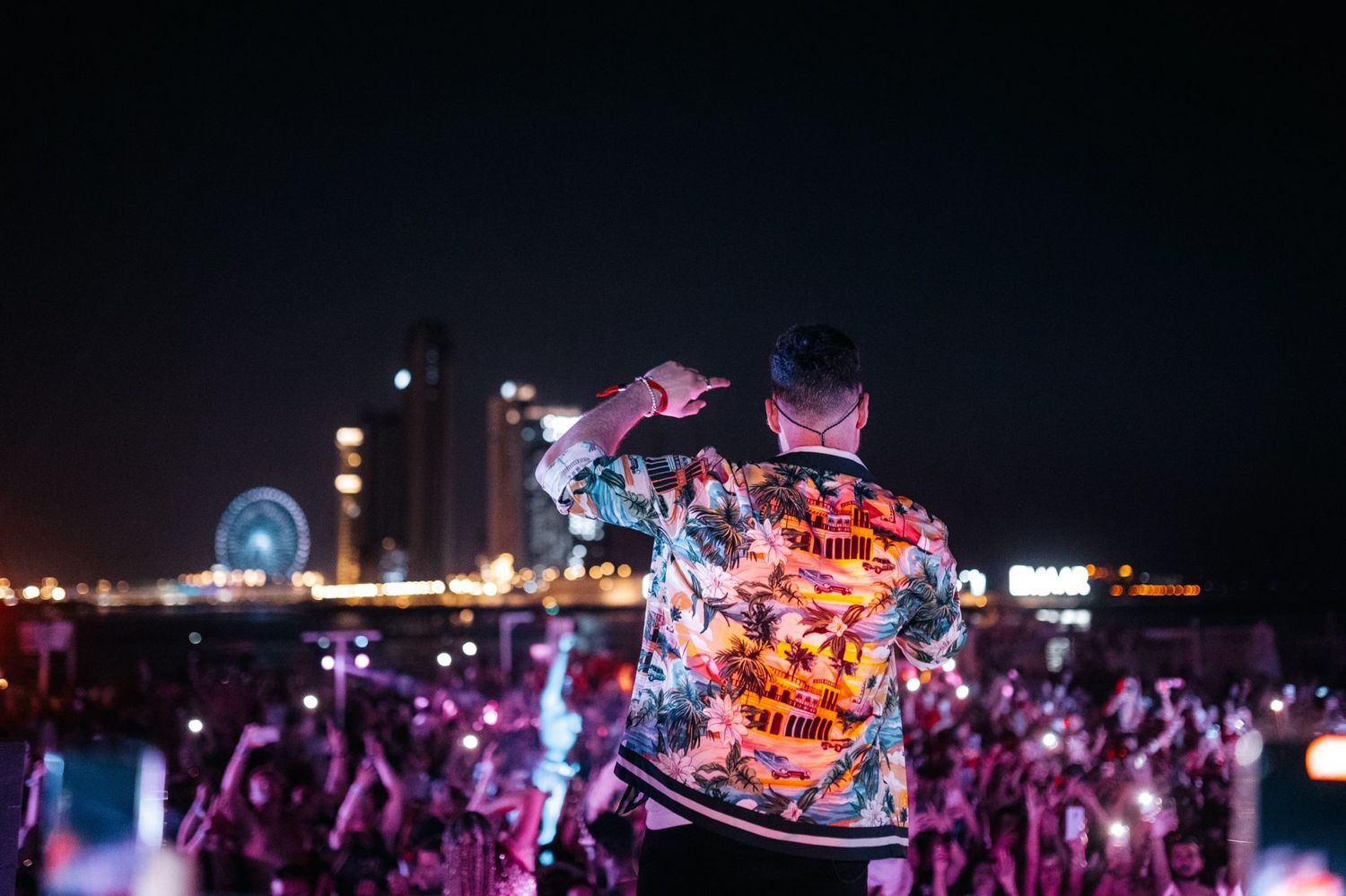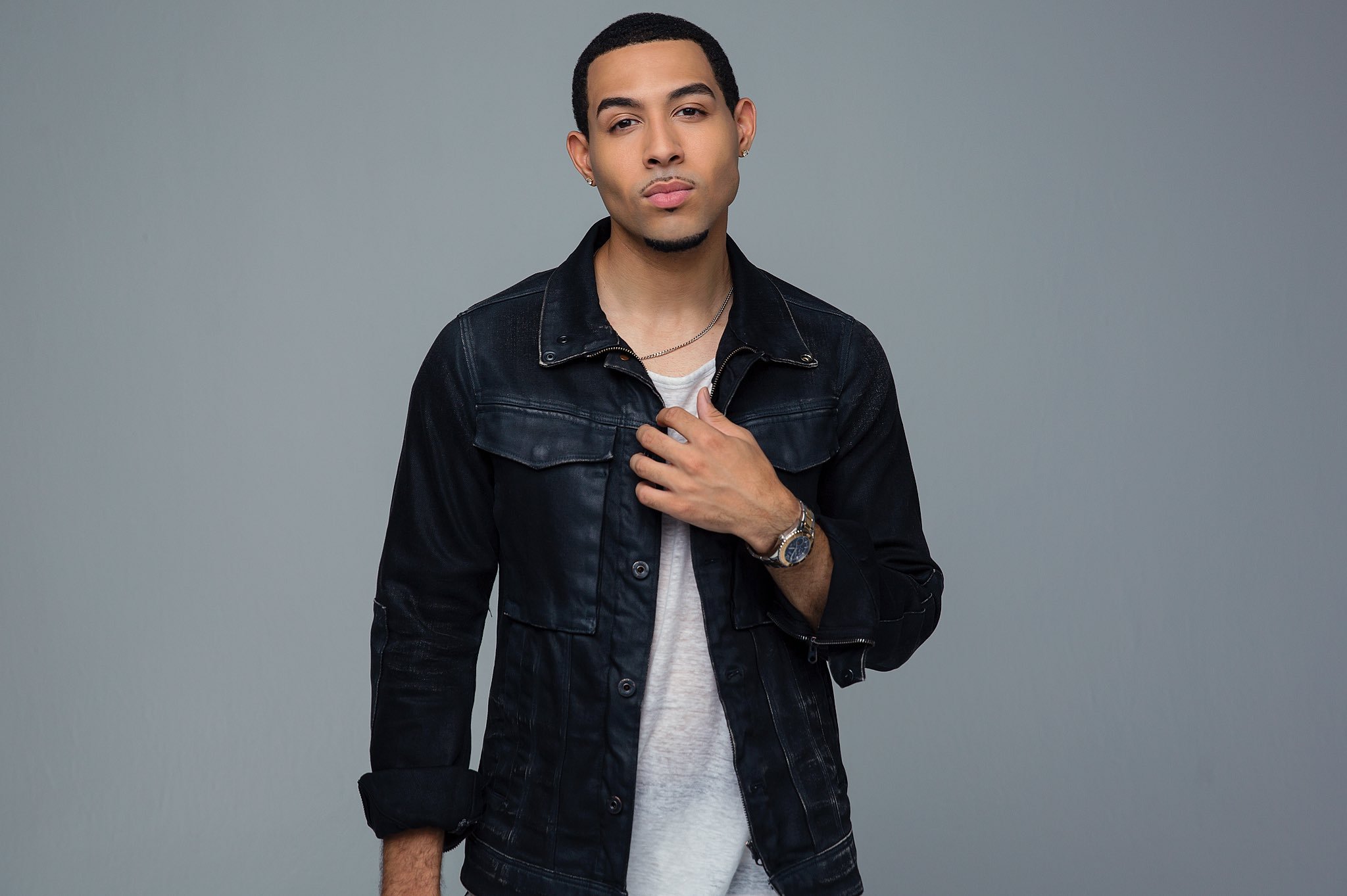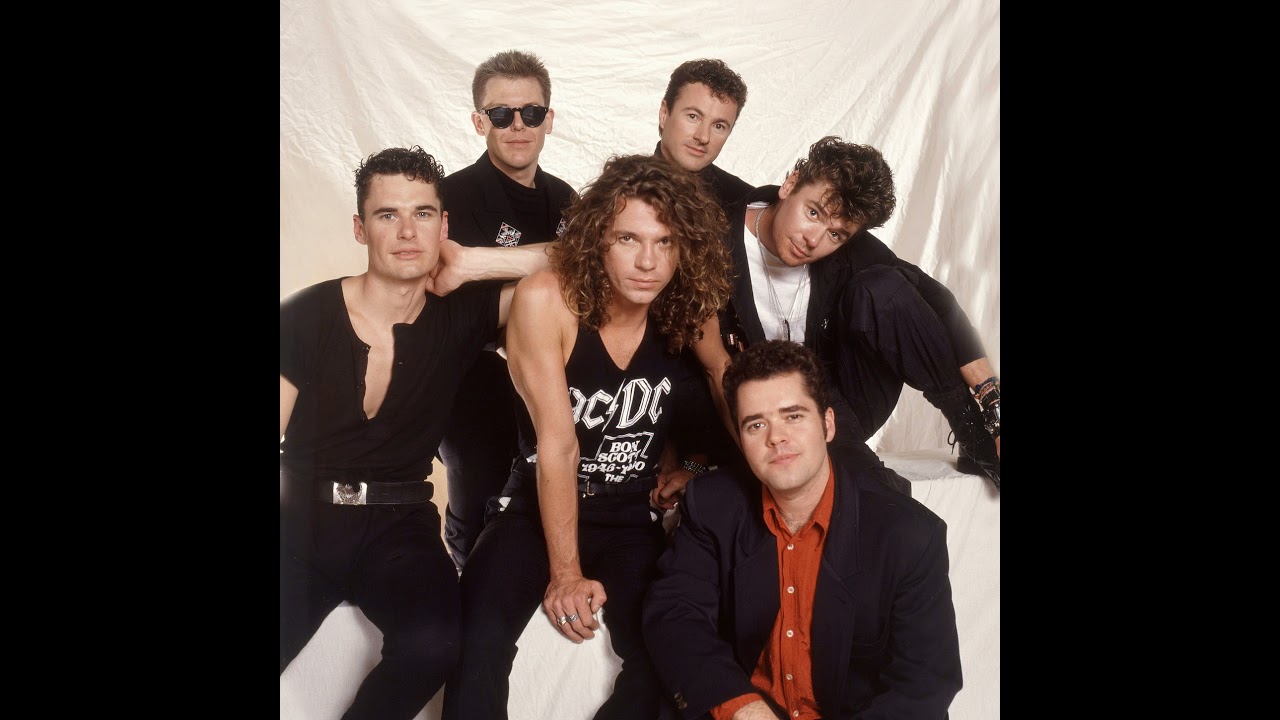Home>Production & Technology>Remix>How Do You Remix
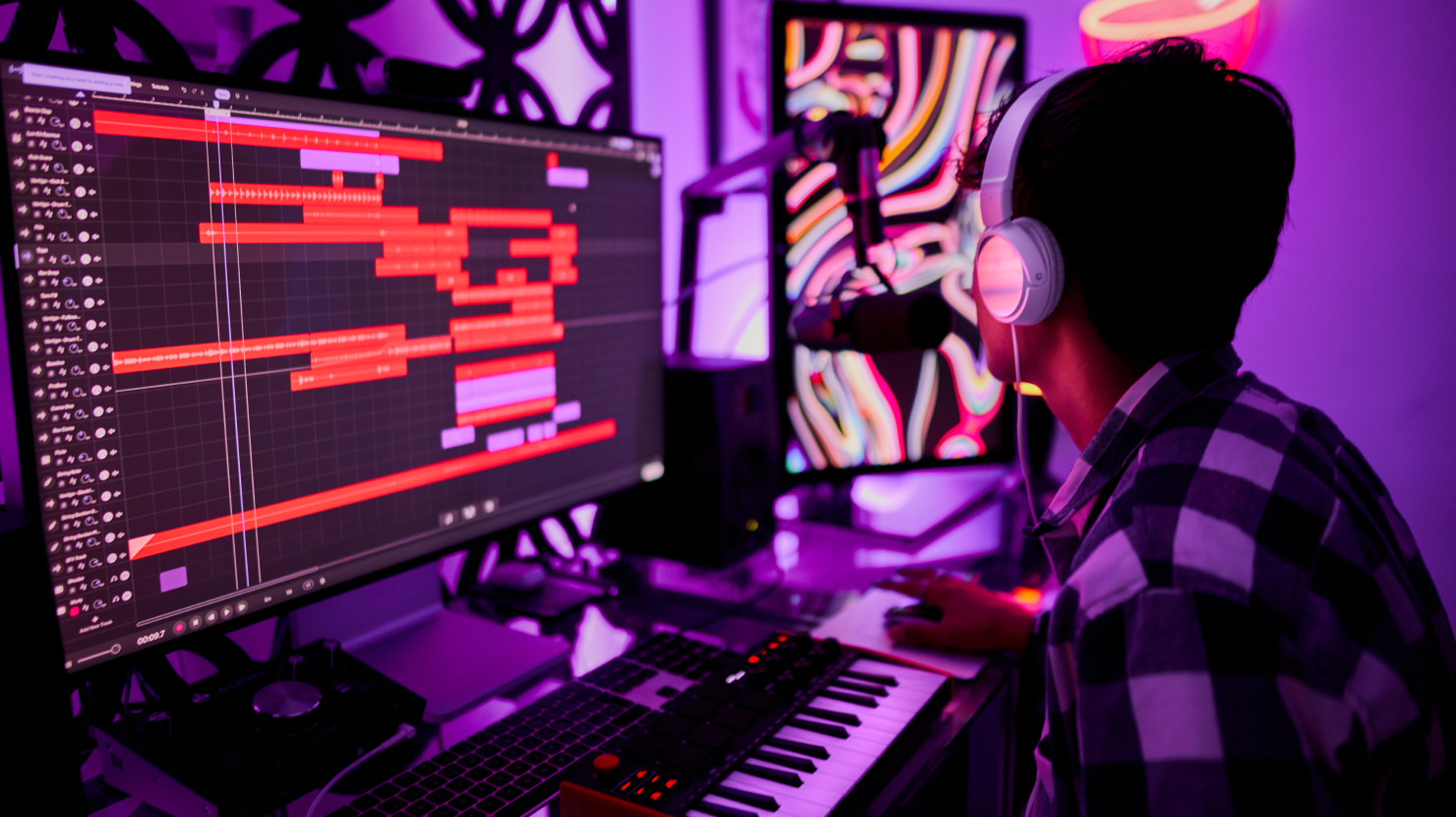

Remix
How Do You Remix
Published: November 19, 2023
Learn how to remix your favorite songs and create your own unique music with our step-by-step guide. Unleash your creativity and become a master remixer today!
(Many of the links in this article redirect to a specific reviewed product. Your purchase of these products through affiliate links helps to generate commission for AudioLover.com, at no extra cost. Learn more)
Table of Contents
Introduction
Welcome to the exciting world of remixing! In today’s digital age, remixing has emerged as a popular and transformative art form that allows individuals to put their own unique spin on existing works. Whether it’s music, art, videos, or literature, remixing provides a creative outlet for expression and innovation.
But what exactly is remixing? At its core, remixing involves taking elements from one or more original works and combining them in new and creative ways. It’s like giving a fresh coat of paint to a masterpiece or adding a twist to a well-known story. Remixing allows us to reinterpret, reimagine, and add our personal touch to the works of others.
The history of remixing can be traced back to the early days of music production, where DJs would blend different songs together to create seamless mixes and mashups. This practice soon found its way into other art forms, such as visual arts and literature, where artists started incorporating existing works into their own creations.
The cultural impact of remixing cannot be overstated. It has not only revolutionized the way we consume and appreciate art but has also democratized the creative process. With the advent of technology and easy access to digital tools, anyone with a passion for remixing can unleash their creativity and make their mark on the artistic landscape.
However, as with any form of artistic expression, there are legal considerations to keep in mind when engaging in remixing. Copyright laws vary from country to country, and it’s important to understand the limitations and permissions for using copyrighted material. It’s crucial to obtain the necessary permissions or work with content that is in the public domain or licensed under Creative Commons.
Fortunately, there are a plethora of techniques and tools available to make the remixing process more accessible and enjoyable. From digital audio workstations to graphic design software, these tools provide users with the flexibility and freedom to experiment and create their own unique remixes.
So, how do you get started with remixing? First, it’s essential to identify your areas of interest and find the original materials you want to remix. Whether it’s a favorite song, a famous painting, or a memorable movie scene, choose something that resonates with you and sparks your creativity.
Next, familiarize yourself with the techniques and tools specific to your chosen art form. For example, if you’re interested in music remixing, learn about beatmatching, sampling, and audio mixing. If you’re into visual arts, dive into techniques like collage, digital manipulation, and juxtaposition.
To gain inspiration and further develop your skills, study the work of renowned remix artists and analyze their creative process. Look for tutorials, online communities, and forums where you can learn from experienced remixers and share your own creations.
Remember, the beauty of remixing lies in embracing your own creativity and giving a fresh perspective to existing works. Don’t be afraid to experiment, take risks, and inject your personality into your remixes.
In the following sections, we will delve deeper into the history, cultural impact, legal considerations, techniques, and future of remixing. So let’s dive in and explore this exciting world of creative reinvention!
What is remixing?
Remixing is the art of taking pre-existing works and reimagining them in new and innovative ways. It involves incorporating elements from one or more original pieces and combining them to create something fresh and unique. Remixing has its roots in music, where DJs would blend different tracks together to create seamless mixes that would get people dancing. However, the concept of remixing has expanded to various other art forms, including visual arts, literature, and even fashion.
When it comes to music remixing, the possibilities are virtually endless. DJs and producers can combine different elements from multiple songs, such as vocals, instrumentals, and beats, to create a completely new and exciting composition. They can change the tempo, add effects, and manipulate the sound in various ways to give the remix its distinctive character. Remixes can range from subtle reinterpretations to radical reworkings that transform the original piece beyond recognition.
In visual arts, remixing involves taking existing images, photographs, or artwork and manipulating them to create new compositions. Artists can digitally manipulate the images, layer different elements, apply filters or effects, and mix various techniques to achieve their desired result. This allows for the creation of visually stunning and thought-provoking artwork that challenges traditional notions of artistic creation.
Literary remixing takes a similar approach by recontextualizing and reimagining existing texts. This can involve writing new stories that incorporate elements or characters from existing works, or even rewriting existing stories from a different perspective or in a different genre. Literary remixing offers a unique opportunity to explore new narratives, add depth to existing stories, and offer fresh perspectives on classic literature.
Remixing isn’t limited to the arts; it has also found its way into the world of fashion. Fashion designers often take inspiration from previous eras, cultures, or iconic styles and remix them to create contemporary and avant-garde designs. They combine different fabrics, patterns, and silhouettes to create garments that blur the lines between past and present fashion trends.
Overall, remixing is about pushing boundaries, challenging conventions, and bringing something new to the table. It allows artists and creators to pay homage to the original works while adding their own unique twist. Remixing is a celebration of creativity, innovation, and the power of reinvention.
The history of remixing
The history of remixing can be traced back to the early days of music production, specifically within the realm of DJing. DJs in the 1970s began blending different songs together to create extended dance mixes, seamlessly transitioning from one track to another. This practice, known as “mixing,” laid the foundation for the concept of remixing.
As the popularity of DJing grew, remixes started to expand beyond the dance floor. In the 1980s, the rise of hip-hop and its sampling culture brought remixing to the forefront of music production. Producers would sample snippets of existing songs and manipulate them, adding their own beats and elements to create entirely new compositions. This approach revolutionized the music industry and paved the way for the widespread popularity of remixing in various genres.
With the advent of digital technology and the rise of the internet, remixing became more accessible to individuals outside the professional music production scene. Software tools and digital audio workstations allowed aspiring remixers to experiment with remixing techniques in their own homes. Online platforms and social media further facilitated the sharing and distribution of remixes, allowing artists to reach a wider audience.
The concept of remixing also made its way into other art forms. In visual arts, artists began incorporating existing images, photographs, and artwork into their own creations. They would manipulate, layer, and combine these elements to create new compositions that challenged traditional notions of art. The emergence of digital image editing software made it easier than ever to remix and create visually striking artworks.
Literature also embraced the concept of remixing through the use of intertextuality. Writers started incorporating references, allusions, and themes from existing works into their own narratives, creating a layered and interconnected web of storytelling. By remixing familiar literary elements, authors were able to add depth and complexity to their own works.
Remixing has also had a significant impact on popular culture. It has allowed artists to breathe new life into old classics, reaching new audiences and introducing them to iconic works in a modern context. Remixes have become a staple in the music industry, with countless artists and producers releasing remixes of popular songs to keep them fresh and appealing to a wide range of listeners.
Furthermore, remixing has opened up new avenues for collaboration and creativity. It has become common for artists to release stems or isolated tracks from their songs to encourage remixing and reinterpretation by other musicians and producers. This collaborative aspect of remixing has fostered a sense of community and shared creativity.
Overall, the history of remixing is a testament to the human desire for innovation and reinvention. It has evolved from a DJ technique to a transformative art form that reaches across various creative disciplines, allowing artists to push boundaries, experiment, and create something truly unique.
The cultural impact of remixing
The cultural impact of remixing cannot be overstated. It has not only revolutionized the way we consume and appreciate art but has also shaped our understanding of creativity and innovation. Remixing has become a powerful tool for cultural expression, enabling individuals to engage with and reinterpret existing works in diverse and profound ways.
One of the key contributions of remixing to culture is its role in democratizing the creative process. In the past, creating and sharing art was often limited to a select few with access to expensive equipment and resources. However, with the advent of digital technology and the internet, remixing has become more accessible to a wider audience. Anyone with a computer and some basic software can now engage in remixing, breaking down barriers and inviting individuals from different backgrounds to contribute their unique perspectives.
Remixing also challenges traditional notions of authorship and originality. It prompts us to question the concept of a singular, immutable artistic creation. Instead, remixing celebrates the idea that art is an ongoing conversation, a collective effort that builds upon what came before. It encourages dialogue between artists, audiences, and cultural influences, nurturing a sense of shared creativity.
Moreover, remixing has provided a platform for marginalized communities and voices to be heard. It has become a tool for cultural resistance and a means to subvert dominant narratives. By remixing and reimagining existing works, artists can redefine representation, challenge stereotypes, and reclaim their cultural heritage. Remixing enables cultural hybridity, blending different traditions and influences to create new narratives that reflect diverse perspectives and experiences.
Another significant cultural impact of remixing is its role in popularizing and preserving historical and traditional art forms. Remixes that incorporate elements from classical music, folk songs, or traditional dances introduce these art forms to new generations. Remixing not only breathes new life into these works but also makes them accessible and relatable to contemporary audiences.
The cultural impact of remixing extends beyond the boundaries of the art world. It has influenced the way we consume and interact with media. Remixes have created new avenues for engagement and participation, allowing audiences to actively shape their experiences. Social media platforms, video sharing websites, and streaming services have given rise to a vibrant remix culture, where individuals share, comment on, and even remix existing content, adding their personal touch to the cultural landscape.
Furthermore, remixing has become a driving force in the evolution of popular music. Remixes of popular songs offer a fresh take on familiar tunes, appealing to different demographics and introducing artists to new audiences. It has become common for producers and DJs to collaborate with mainstream artists, creating remixes that blend genres and push the boundaries of musical expression.
Overall, the cultural impact of remixing is multifaceted and far-reaching. It promotes inclusivity, creativity, and cultural exchange. By reshaping and recontextualizing existing works, remixing enriches our understanding of art, challenges dominant narratives, and fuels societal and cultural progress.
Legal issues surrounding remixing
While remixing is a creative and transformative process, it is important to consider the legal implications when engaging in this art form. Copyright laws and intellectual property rights protect original works, and remixing involves incorporating elements from these protected works. Understanding the legal framework surrounding remixing is crucial to ensure compliance and respect for the rights of the original creators.
The primary concern when remixing is the issue of copyright infringement. Copyright grants the creators of original works exclusive rights to control the use and distribution of their creations. Remixing often involves using copyrighted material without permission, which can potentially infringe upon these rights. However, there are certain circumstances and legal exceptions that allow for the use of copyrighted material without explicit permission.
One legal concept relevant to remixing is fair use (or fair dealing in some jurisdictions), which allows for limited use of copyrighted material for purposes such as criticism, commentary, parody, or education. In the context of remixing, fair use might apply if the remix adds new meaning, purpose, or artistic value to the original work. However, determining whether a particular remix qualifies as fair use can be subjective and depends on various factors, including the purpose and nature of the remix, the amount and substantiality of the original material used, and the effect on the market for the original work.
In some cases, remixing may fall under the umbrella of transformative use. Transformative use involves significantly altering or adding new creative elements to the original work, resulting in a new and distinct piece. Transformative works are often considered to be original enough to warrant separate copyright protection. However, it’s important to note that transformative use does not automatically exempt a remix from copyright infringement if the original material used is still recognizable and substantial.
Another legal consideration is licensing. Some creators choose to release their work under specific licenses that govern how their work can be used and remixed. Creative Commons licenses, for example, are a popular choice among artists who want to allow others to remix and adapt their work, provided certain conditions are met (such as attribution or non-commercial use). It’s essential to understand and abide by the terms of these licenses when remixing content that falls under such licensing arrangements.
Additionally, it’s important to be aware of the concept of public domain. Works in the public domain are no longer protected by copyright due to expiration or the absence of copyright protection. Public domain works can be freely used, remixed, and shared without the need for permission. However, it is still crucial to verify the copyright status of a work to ensure that it is indeed in the public domain.
To ensure compliance with copyright laws and respect for the rights of creators, it is advisable to obtain permission from the original copyright holders before remixing their work. This can be done through direct communication or by seeking out platforms that provide licensing options specifically for remixing purposes.
It is important to note that copyright laws vary from country to country, so it is essential to understand the legal framework that applies to your specific jurisdiction. Consulting with legal professionals knowledgeable in intellectual property law can provide invaluable guidance and ensure that your remixes are compliant with the legal requirements.
By being mindful of the legal issues surrounding remixing and respecting the rights of original creators, we can foster a culture of responsible and ethical remixing that furthers creative expression while maintaining the necessary legal safeguards.
Techniques and tools for remixing
Remixing is a creative process that involves manipulating and reimagining existing works. To create compelling remixes, artists employ various techniques and utilize specialized tools that enhance their ability to shape and transform the original material. Whether you’re interested in music, visual arts, literature, or other creative disciplines, there are techniques and tools available to help bring your remixing visions to life.
In music remixing, one of the fundamental techniques is sampling. Sampling involves taking snippets or portions of pre-recorded audio and incorporating them into a new composition. This technique allows remixers to borrow elements such as vocals, instrumentals, or beats from existing songs and layer them with additional sounds to create a unique sonic landscape. Sampling can be done manually by slicing and rearranging audio in a digital audio workstation (DAW), or through tools and plugins designed specifically for sampling.
Beatmatching and tempo manipulation are essential techniques in remixing dance music genres. Beatmatching involves aligning the beats of different songs to create seamless transitions and smooth mixing between tracks. Tempo manipulation allows remixers to speed up or slow down the tempo of a song to match the desired bpm (beats per minute) or mood of the remix. DAWs and DJ software often offer features that facilitate beatmatching and tempo control, allowing for precise and synchronized remixes.
Remixers also employ various effects and processing techniques to add depth and texture to their remixes. These can include applying EQ (equalization) to shape the frequency balance of the audio, adding reverb or delay for ambiance, or using distortion and modulation effects to create unique sonic characteristics. Effects plugins and processors are powerful tools that assist in achieving desired sound aesthetics and creating signature sounds.
Visual arts remixing utilizes different techniques to manipulate and combine existing images and artwork. Collage is a popular technique, involving cutting, rearranging, and layering elements from different sources to create a cohesive composition. Digital manipulation allows remixers to alter colors, textures, and shapes, giving a fresh interpretation to the original artwork. Juxtaposition is another technique that involves placing contrasting or unexpected elements together to create visual impact and evoke new meanings.
For writers engaged in literary remixing, techniques such as intertextuality and pastiche play a crucial role. Intertextuality involves referencing or incorporating elements from existing texts, such as quotes, characters, or themes, into new works. Pastiche involves imitating or emulating the style or structure of a particular literary work or author. Remix writers utilize these techniques to create multi-layered narratives, foster connections between stories, and offer new perspectives.
Tools for remixing vary depending on the medium. In music remixing, popular software tools include digital audio workstations such as Ableton Live, FL Studio, and Logic Pro. These software platforms provide a range of features, including sampling, sequencing, and effects processing, to facilitate the remixing process. DJ software like Serato and Traktor offer specialized tools for beatmatching and seamless mixing.
For visual arts remixing, graphic design software such as Adobe Photoshop, Illustrator, and GIMP are widely used. These tools provide powerful image editing capabilities, layering options, and filters for remixers to manipulate and transform existing artwork. Online platforms like Canva also offer user-friendly interfaces and pre-existing templates that simplify the remixing process for beginners.
In literature remixing, word processing software like Microsoft Word and Google Docs serve as essential tools. These tools allow writers to manipulate and rearrange text, insert references, and experiment with different writing styles easily. Online writing communities and platforms such as Wattpad and Medium provide spaces for writers to share their remixes and interact with other writers.
Regardless of the medium, the most important tool for remixing is your creativity and imagination. Techniques and software can aid in the process, but it is the unique vision and artistic expression that ultimately drives the remixing journey. Experiment, explore, and let your creativity flow as you harness the power of techniques and tools to turn existing works into something entirely new and extraordinary.
How to get started with remixing
Are you ready to explore the exciting world of remixing? Getting started in remixing doesn’t require a professional background or expensive equipment. With a passion for creativity and a willingness to experiment, you can dive right into the remixing process. Here are some steps to help you embark on your remixing journey.
1. Choose your area of interest: Consider the medium you want to work with, whether it’s music, visual arts, literature, or another creative form. Identifying your area of interest will help you focus your efforts and gain a deeper understanding of the techniques and tools specific to that medium.
2. Find source material: Look for existing works that inspire you and serve as a starting point for your remixes. Explore different genres and styles within your chosen medium. This could be a favorite song, a piece of artwork, or a passage from a novel. The source material should resonate with you and ignite your creativity.
3. Study and analyze: Take the time to study and analyze the source material. Understand its structure, elements, and techniques used. This will help you grasp the underlying foundation of the work and provide insight into how you can remix it effectively.
4. Learn remixing techniques: Familiarize yourself with the specific techniques used in your chosen medium. For music remixing, learn about beatmatching, sampling, and audio mixing. If you’re interested in visual arts, explore techniques like collage, digital manipulation, and juxtaposition. Understand how these techniques can be applied to transform the original material into a remix.
5. Acquire the necessary tools: Depending on your chosen medium, invest in the appropriate tools and software. For music remixing, consider using a digital audio workstation (DAW) like Ableton Live, FL Studio, or Logic Pro. Graphic design software such as Adobe Photoshop or GIMP can be useful for visual arts remixing. Make sure to explore online resources, tutorials, and forums to enhance your understanding of the tools and techniques available.
6. Gain inspiration from other remixers: Study the work of renowned remix artists within your chosen medium. Analyze their creative process, examine their remixes, and understand how they add their unique touch to existing works. This will inspire you and provide valuable insights into the art of remixing.
7. Experiment and create: Don’t be afraid to experiment and let your creativity flow. Begin remixing by incorporating your own ideas and vision into the source material. Play around with different techniques, tools, and effects to transform and reimagine the original work. Embrace the iterative process of creating multiple versions of your remix to refine and enhance it further.
8. Share and seek feedback: Once you’ve created your remix, share it with others. Seek feedback from friends, fellow artists, or online communities. Their perspectives can provide valuable insights and help you improve your remixing skills.
9. Respect copyright and legal considerations: When remixing, it’s important to be mindful of copyright laws and the legal framework surrounding the use of existing material. Make sure to understand fair use provisions, obtain necessary permissions, or work with content that is in the public domain or licensed under Creative Commons. Respecting the rights of original creators is crucial for maintaining ethical and responsible remixing practices.
10. Keep learning and evolving: Remixing is a continuous learning process. Stay updated on new techniques, tools, and trends within your chosen medium. Attend workshops, participate in online courses, and engage with the remixing community to expand your knowledge and refine your skills.
Remember, remixing is a creative expression of your unique perspective. Embrace the opportunity to bring something new to existing works and let your imagination run wild. With passion, curiosity, and an open mind, you can embark on a rewarding remixing journey and unleash your creative potential.
Examples of successful remixes
Remixing has given birth to countless successful and influential creations that have left a lasting impact on various artistic fields. These examples showcase the transformative power of remixing and how it can bring new life and perspectives to existing works. Here are a few notable examples of successful remixes:
1. “Ni**as in Paris” by JAY-Z & Kanye West (Remixed by Skrillex): Skrillex, known for his prowess in electronic music production, took the original hip-hop track and infused it with his signature dubstep sound. The remix added heavy bass drops, aggressive synths, and intricate electronic elements, transforming the song into a high-energy dancefloor anthem that resonated with fans across genres.
2. “Pride (In the Name of Love)” by U2 (Remixed by Kygo): Kygo, a Norwegian DJ and producer, took an iconic U2 song and gave it a modern tropical house twist. The remix seamlessly blended Bono’s distinctive vocals with vibrant tropical beats, creating a fresh and summery reimagining of the original rock anthem.
3. “Lost in Translation” by Sofia Coppola (Remixed by F. Scott Fitzgerald): In a non-musical example, Sofia Coppola’s film “Lost in Translation” can be seen as a remix of F. Scott Fitzgerald’s novel “The Great Gatsby.” Coppola took the themes of disillusionment and social alienation from the original work and transposed them to the modern-day setting of Tokyo, creating a visually stunning and emotionally evocative film.
4. “The Grey Album” by Danger Mouse: “The Grey Album” is a groundbreaking remix project by producer Danger Mouse that merged Jay-Z’s “The Black Album” with The Beatles’ “The White Album.” Danger Mouse seamlessly blended lyrics from Jay-Z’s acapellas with samples and instrumentals from The Beatles’ songs, creating a cohesive and inventive mashup that became a cultural phenomenon.
5. “Bach Suite No. 1 for Solo Cello” (Remixed by Yo-Yo Ma and Bobby McFerrin): Classical cellist Yo-Yo Ma and renowned vocalist Bobby McFerrin collaborated on a live performance and remix of Bach’s Suite No. 1 for Solo Cello. McFerrin added his own vocal improvisations and intricate vocal percussions, intertwining them with Ma’s masterful cello playing. The result was a mesmerizing and innovative interpretation of Bach’s timeless composition.
These examples demonstrate the ability of remixing to transcend genres and create something entirely new and captivating. Each remix adds a unique flavor, showcasing the artistic vision and creativity of the remixers. They have successfully bridged gaps between different musical styles and eras, invigorating the original works and attracting new audiences in the process.
These successful remixes have also sparked conversations about artistic collaboration, copyright laws, and the boundaries of creative expression. They have inspired countless artists and creators to explore the possibilities of remixing, further contributing to the evolution of various artistic mediums.
Remixing continues to be a dynamic and influential art form. It invites artists to reimagine, reinterpret, and breathe new life into existing works, creating a vibrant cultural landscape where the lines between originality and reimagination are beautifully blurred.
Tips for creating your own remix
Creating your own remix can be a thrilling and fulfilling artistic venture. Whether you’re new to remixing or an experienced artist looking for some inspiration, here are some helpful tips to guide you in the process:
1. Understand the essence of the original: Take the time to fully understand and appreciate the original work you’re remixing. Analyze its structure, key elements, and the emotions it evokes. This will provide clarity and direction as you begin your remixing journey.
2. Identify your creative vision: Decide on the direction you want to take with your remix. Consider the emotions, atmosphere, or narrative you want to convey. This will serve as a guiding light throughout the remixing process.
3. Embrace experimentation: Remixing is an opportunity to explore new ideas and push creative boundaries. Be open to experimenting with different techniques, sounds, and effects. Don’t be afraid to take risks and try unconventional approaches. The remixing process thrives on innovation and originality.
4. Preserve the essence while adding your touch: Strive to retain some elements of the original work that made it special, while infusing it with your own creative twist. This balance between preservation and innovation will contribute to a successful remix that resonates with both familiar and new audiences.
5. Utilize technology and tools: Take advantage of the wide array of software and tools available for remixing. Experiment with digital audio workstations, graphic design software, or writing tools that facilitate the remixing process. Familiarize yourself with these tools and explore their capabilities to enhance your artistic expression.
6. Pay attention to timing and structure: Consider the arrangement and structure of your remix. Ensure that the transitions, tempo changes, and additions flow smoothly and enhance the overall impact. Pay attention to the timing of each section and ensure it complements the original work while adding your unique touch.
7. Collaborate with other artists: Remixing can be a collaborative endeavor. Consider working with other artists or musicians who bring their own unique expertise to the project. Collaborations can result in refreshing perspectives, unexpected ideas, and a shared creative experience.
8. Seek inspiration from other art forms: Look beyond your immediate medium for inspiration. Explore art forms such as film, literature, or visual arts. Draw from their techniques and storytelling devices to infuse your remix with new and intriguing elements.
9. Trust your instincts: Remember that remixing is a creative expression of your unique vision. Trust your instincts and allow your creativity to guide you. Follow your passion and intuition, and don’t be afraid to make bold artistic choices.
10. Share and gather feedback: Once you have completed your remix, share it with others and seek feedback. Engage with fellow artists, friends, or online communities to gain insights and perspectives. The feedback you receive can help you refine your remix and further develop your remixing skills.
Remixing is a personal and artistic journey that allows you to showcase your creativity while paying homage to the original work. By following these tips and infusing your unique perspective, you can create a remix that captivates audiences, sparks conversations, and showcases your remixing prowess.
The future of remixing
The future of remixing is both exciting and boundless, as technology continues to advance and creative boundaries continue to expand. With the increasing accessibility of digital tools and platforms, remixing is becoming more democratized, allowing a wider range of individuals to engage in the creative process. Here are some potential trends and developments that may shape the future of remixing:
1. Artificial Intelligence (AI) and Machine Learning: As AI technology advances, we can expect to see it play a significant role in the remixing process. AI algorithms can analyze vast amounts of music or visual data, identifying patterns and generating new combinations or interpretations. This could lead to the creation of AI-powered remixing tools that provide instant inspiration, generate unique remixes, and push creative boundaries.
2. Virtual Reality (VR) and Augmented Reality (AR): VR and AR technologies have the potential to revolutionize the way we experience and interact with remixes. Imagine stepping into a virtual environment where you can visually and audibly explore a remixed artwork or music composition. These immersive technologies can transport audiences into new remixing landscapes and provide a multi-sensory experience.
3. Collaboration across disciplines: Remixing has traditionally happened within specific artistic disciplines, such as music or visual arts. However, the future may bring increased collaboration across different creative fields. Artists from various disciplines may come together to remix works in ways that combine music, visual art, literature, and more, offering audiences multi-dimensional and immersive remix experiences.
4. Interactive and participatory remixing: With the rise of social media and digital platforms, remixing is becoming more interactive and participatory. Artists and content creators can involve their audiences in the remixing process through crowd-sourcing, allowing fans to submit their own contributions or providing remixing tools for users to create their own versions. This fosters a sense of community and shared creativity.
5. Remixing as a tool for activism and social change: Remixing has the potential to be a powerful tool for activism and social commentary. As artists remix existing content to express their perspectives and challenge societal norms, we may see an increase in remixes that shed light on social issues, inspire change, and offer alternative narratives.
6. Ethical and legal considerations: As remixing continues to gain prominence, the ethical and legal considerations will become even more important. Artists and remixers may need to navigate complex copyright frameworks, fair use policies, and licensing agreements to ensure their remixes are ethically and legally sound. Innovations in licensing models and copyright laws may emerge to better accommodate remixing practices.
7. Remixing as a pedagogical tool: Remixing offers a unique opportunity for learning and education. It allows students to engage with existing works and explore their creativity through reinterpretation. Schools and educational institutions may increasingly incorporate remixing into their curriculum, encouraging critical thinking, creative expression, and interdisciplinary learning.
These are just a few possibilities that could shape the future of remixing. As technology advances, societal attitudes towards remixing evolve, and creative boundaries continue to be pushed, we can expect remixing to remain a vibrant and ever-changing art form. The future of remixing is an open canvas, ready to be reimagined, reinvented, and embraced by artists and creators around the world.
Conclusion
Remixing has emerged as a transformative and influential art form that has revolutionized the way we approach and appreciate creativity. From music to visual arts, literature to fashion, remixing has become a powerful vehicle for self-expression, cultural exchange, and innovation.
Throughout this journey, we explored the fundamental concepts of remixing, delved into its rich history, and examined its cultural impact. We discussed the legal considerations involved and highlighted the techniques and tools that enable artists to create captivating remixes. We also provided guidance on how to get started with remixing and offered examples of successful remixes. Looking towards the future, we explored potential trends and developments that may shape the evolution of remixing.
In conclusion, remixing embodies the spirit of reinvention and creative exploration. It blurs the boundaries between originality and reinterpretation, allowing artists to pay homage to existing works while adding their unique touch. Remixing promotes inclusivity, collaboration, and cultural exchange, fostering a sense of shared creativity across various artistic disciplines.
As we continue to embrace technology, share ideas, and push the boundaries of creativity, the future of remixing is bright. Advancements in AI, VR, and AR will further enhance the remixing experience, while interactive and participatory elements will engage audiences like never before. Remixing will continue to be a means of artistic expression, activism, and social commentary, inspiring change and challenging societal norms.
As remixers, let us always remember to respect the rights of original creators, navigate the ethical and legal considerations with care, and contribute to a responsible and vibrant remixing culture.
So, whether you’re new to remixing or an experienced artist seeking inspiration, embrace the possibilities and embark on your own remixing journey. Let your creativity soar, experiment with new techniques and tools, collaborate with others, and share your remixes with the world. By remixing and reimagining existing works, we contribute to the ever-evolving tapestry of art and inspire others to explore the endless realms of creativity.


